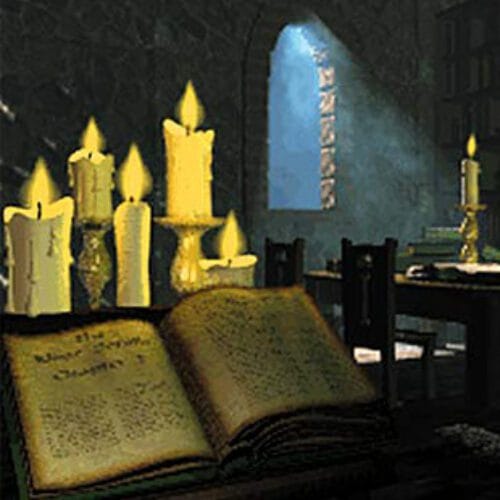
A question for the ages is the — In a nostalgic reflection on the legacy of gaming, the question arises: Is The Elder Scrolls II: Daggerfall a good game, especially in light of its co-creator Julian LeFay's recent passing?.
A Question For The Ages Is The
In a nostalgic reflection on the legacy of gaming, the question arises: Is The Elder Scrolls II: Daggerfall a good game, especially in light of its co-creator Julian LeFay’s recent passing?
The Legacy of Daggerfall
The Elder Scrolls II: Daggerfall, released in 1996, is a significant title in the history of video games. Developed by Bethesda Softworks, it is often remembered for its ambitious scope and complexity. At the time of its release, Daggerfall featured one of the largest game worlds ever created, encompassing over 161,000 square kilometers, with more than 4,000 towns, cities, and dungeons. This vastness set a new standard for open-world gaming and laid the groundwork for future titles in the Elder Scrolls series.
Julian LeFay: A Tribute
The recent passing of Julian LeFay, the co-creator of Daggerfall, has prompted many in the gaming community to revisit this classic title. LeFay’s contributions to the game and the industry at large are significant. He played a crucial role in shaping the mechanics and design philosophy that would influence not only the Elder Scrolls series but also the broader landscape of role-playing games (RPGs).
In remembering LeFay, many fans reflect on how Daggerfall was a formative experience for them. The game was not just a product of its time; it was an embodiment of the creative spirit of the ’90s gaming scene, a period marked by experimentation and innovation.
The Gameplay Experience
Daggerfall’s gameplay is characterized by its open-ended nature, allowing players to explore a vast world filled with quests, factions, and lore. Players can choose to follow the main storyline or engage in a plethora of side quests, which often lead to unique experiences and outcomes. The game’s character creation system is also noteworthy, allowing for extensive customization of skills and attributes, which has become a hallmark of the Elder Scrolls franchise.
Technical Achievements
At the time of its release, Daggerfall was groundbreaking in terms of technology. The game utilized a procedurally generated world, meaning that much of the game’s content was created algorithmically rather than manually. This allowed for a level of scale and variety that was unprecedented, although it also led to some gameplay quirks and bugs that players encountered.
The graphics of Daggerfall, while primitive by today’s standards, were impressive for the time. The game featured a mix of 2D and 3D graphics, which helped create an immersive environment for players. However, the technical limitations of the era meant that players often faced challenges such as long loading times and occasional crashes.
Nostalgia vs. Modern Standards
Looking back on Daggerfall, it serves as a reminder of what has been lost in modern gaming. The sheer scale of the game and the freedom it offered players is often contrasted with today’s more streamlined experiences. Many modern games prioritize accessibility and polish, sometimes at the expense of the depth and complexity that titles like Daggerfall provided.
The Evolution of Bethesda
Bethesda, the developer behind Daggerfall, has undergone significant changes since the game’s release. The studio has become synonymous with large-scale open-world RPGs, with titles like The Elder Scrolls V: Skyrim and Fallout 4 achieving commercial and critical success. However, the evolution of the company has also led to a polarized reception among fans. Some players cherish the nostalgia of earlier titles, while others appreciate the advancements in technology and storytelling that newer games offer.
As Bethesda continues to develop new titles, including the highly anticipated Starfield, the legacy of Daggerfall remains a touchstone for discussions about game design and player experience. The contrasting philosophies between the past and present highlight the ongoing debate within the gaming community regarding what makes a game “good.”
The Broader Impact on Gaming
Daggerfall’s influence extends beyond its immediate gameplay mechanics. The game is often cited as a precursor to many modern RPGs, particularly in how it handles player choice and world-building. Its ambitious scope has inspired countless developers to push the boundaries of what is possible in video game design.
Community and Modding
Another aspect of Daggerfall’s legacy is its vibrant community. Even after nearly three decades, the game continues to be played and modded by enthusiasts. The modding community has taken it upon themselves to enhance the game, fixing bugs, improving graphics, and adding new content. This ongoing support is a testament to the game’s enduring appeal and the deep connection players have with it.
Conclusion: A Game for the Ages
As we reflect on the question of whether The Elder Scrolls II: Daggerfall is a good game, it’s essential to consider the context in which it was created. While it may not meet the polished standards of modern titles, its ambition, complexity, and the nostalgia it evokes for many players cannot be understated. The game’s legacy, bolstered by the recent remembrance of Julian LeFay, serves as a reminder of a time when video games were often defined by their scope and creativity.
Ultimately, Daggerfall represents a significant chapter in the history of gaming, one that continues to inspire both players and developers alike. As the industry evolves, the lessons learned from games like Daggerfall remain relevant, reminding us of the importance of innovation and the enduring power of nostalgia.
Source: Original reporting
Further reading: related insights.
Was this helpful?
Last Modified: August 19, 2025 at 12:31 am
3 views















